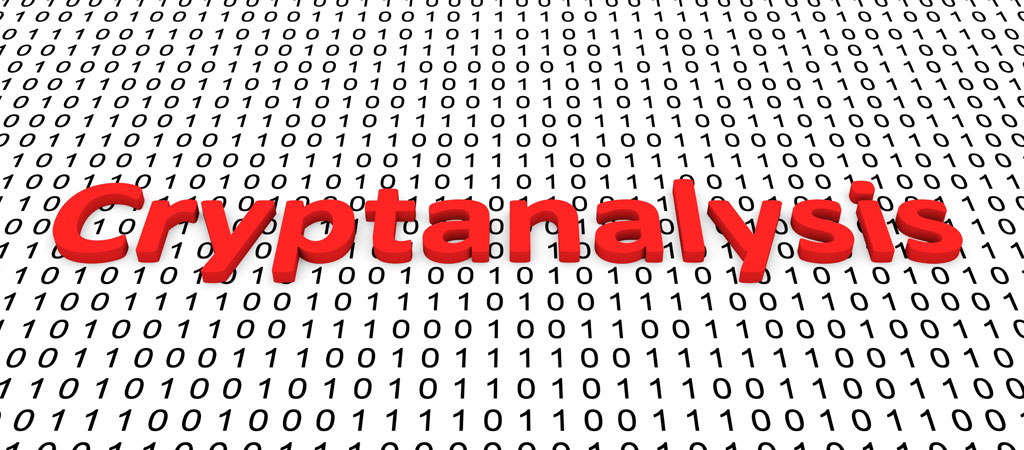Common Crypt-Analysis methods and tools
While there are hundreds of different codes and cipher systems in the world, there are some common universal techniques & tools cryptanalysts use to solve them. But first, let’s understand the meaning of Crypt Analysis.
What is Crypt Analysis?
It refers to an examination of terminologies, namely ciphertext, ciphers, and cryptosystems to learn and recognize how they work, along with identifying & improving techniques to conquer or abate them.
With the prime aim of obtaining the plain message from the intercepted ciphertext, Crypt Analysis is utilized to overpower cryptographic security systems and get access to the substance of encrypted messages, even if the cryptographic key is not known.
There are several basic methods & tools that can be used to encrypt a message.
Crypt Analysis Techniques (i.e. Attacks)
a) Ciphertext Only: The cryptanalyst has access only to a collection of ciphertexts or code texts.
b) Known plaintext attack: Here the analyst may have access to some or all the plaintext of the ciphertext; the analyst’s goal, in this case, is to discover the key used to encrypt the message and decrypt the message. Once the key is identified, an attacker can decode all messages that had been encrypted by utilizing that key.
c) Chosen plaintext attack: The analyst either knows the encryption algorithm or has access to the device used to do the encryption. The analyst can encrypt the ‘chosen plaintext’ with the targeted algorithm to obtain data about the key.
d) Adaptive Chosen Plaintext: Like a chosen-plaintext attack, except the attacker can choose subsequent plaintexts based on information learned from previous encryptions. Similarly, Adaptive chosen ciphertext attack.
e) Related-key attack: Like a chosen-plaintext attack, except the attacker can obtain ciphertexts encrypted under two different keys. The keys are unknown, but the relationship between them is known; for example, two keys differ in one bit.
f) Man-in-the-middle attack: This occurs when cryptanalysts find ways to insert themselves into the communication channel between two parties who wish to exchange their keys for secure communication via asymmetric or public key infrastructure. The attacker then performs a key exchange with each party, with the original parties believing they are exchanging keys with each other. The two parties then end up utilizing keys that are familiar to the attacker.
g) Integral cryptanalysis attack: This uses sets of plaintexts in which part of the plaintext is kept constant, but the rest of the plaintext is modified. This attack can be especially useful when applied to block ciphers that are based on substitution-permutation networks.
Computational resources required for Crypt Analysis
Attacks can also be characterized by the resources they require.
Those resources include:
• Time: The number of computation steps (e.g., test encryptions) which must be performed.
• Memory: The amount of storage required to perform the attack.
• Data: The quantity and type of plaintexts and ciphertexts required for an approach.
High-performance computing (HPC) is one of the most essential tools fueling the advancement of science. By leveraging GPU-powered parallel processing across multiple compute nodes, it can run advanced, large-scale application programs efficiently, reliably, and quickly. This acceleration delivers a dramatic boost in throughput and cost savings, paving the way to cryptanalysis.
Crypt Analysis Tools
Some of the common tools used for Crypt Analysis are:
a) CrypTool: An open-source project that produces e-learning programs and a web portal for learning about cryptanalysis and cryptographic algorithms.
b) Cryptol: A domain-specific language originally designed to be used by the National Security Agency specifying cryptographic algorithms. Cryptol makes it promising for users to supervise how algorithms function in software programs, written to indicate the algorithms or ciphers.
c) Ganzúa: An open-source cryptanalysis tool used for classical polyalphabetic and monoalphabetic ciphers. Ganzúa lets users outline nearly complete arbitrary cipher and plain alphabets, granting for the accurate cryptanalysis of cryptograms attained from the non-English text.
Sunartek has vast experience in this field and generally proposes setting up a Crypto Analysis Lab having a High-Performance Computing (HPC) Facility to do Analysis on intercepted communications that are encrypted. This lab will also have a High-Performance Computing capability based on NVIDIA Tesla V 100 based GPU. We at Sunartek labs have also developed algorithms to break the codes. Crypto algorithms of GSM, Thuraya, Iridium, INMARSAT have been successfully broken by our algorithms.
The proposed Crypto Analysis Lab will consist of the following:
• GPU-Based High-Performance Computer
• Dedicated Cryptanalysis Tools
• Training
Sunartek’s Password and Encryption Breaking Technique
Password Breaking is the process of regaining passwords from data that have been collected or transmitted through a computer system. By having proficient know-how in both these fields, Sunartek’s Password and Encryption breaking techniques use Graphical Processing Units (GPU’s) as a better alternative to Central Processing Units (CPU’s).
Sunartek’s Distributed Password Recovery system permits to use of more than one computer (GPU) to allocate simultaneous attacks.
Beneficial offers for Password Breaking from Sunartek
• Brute Force/ Dictionary Attack
• Creation of Special Tools
• High-performance Computing Platform
• Ready-made tools for existing systems
Overall, opting for Sunartek would be valuable as we respect every task at hand and maintain utmost discretion in encrypting any data.

